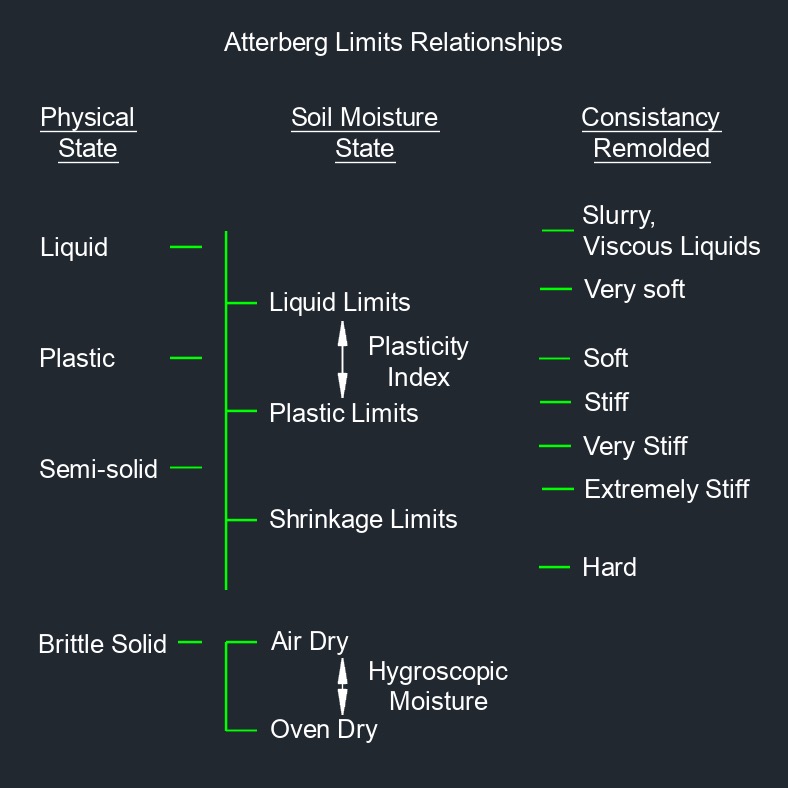Consistency Index
Consistency Index Formula |
||
|
\( CI \;=\; \dfrac{ LL - w_n }{ PI }\) (Consistency Index) \( LL \;=\; w_n + CI \cdot PI \) \( w_n \;=\; LL - CI \cdot PI \) \( PI \;=\; \dfrac{ LL - w_n }{ CI }\) |
||
| Symbol | English | Metric |
| \( CI\) = consistency index | \(dimensionless\) | \(dimensionless\) |
| \( LL \) = liquid limit | \(dimensionless\) | \(dimensionless\) |
| \( w_n \) = natural water content (moisture content) | \(dimensionless\) | \(dimensionless\) |
| \( PI \) = plastic index | \(dimensionless\) | \(dimensionless\) |
 Consistency index, abbreviated as CI, also called Atterberg limit, a dimensionless number, is typically refers to a measure that assesses the relative hardness or softness of a soil and is used for soil classification. It helps engineers and geologists categorize soils based on their consistency, which is an important factor in construction, foundation design, and other geotechnical applications.
Consistency index, abbreviated as CI, also called Atterberg limit, a dimensionless number, is typically refers to a measure that assesses the relative hardness or softness of a soil and is used for soil classification. It helps engineers and geologists categorize soils based on their consistency, which is an important factor in construction, foundation design, and other geotechnical applications.
The soil consistency index is often determined using visual and tactile observations of the soil's behavior. It is commonly expressed using terms like "firm," "plastic," "sticky," "cohesive," or "granular" to describe the soil's consistency. The index helps provide a qualitative assessment of a soil's properties, which can be valuable in making decisions about construction methods and foundation design.

